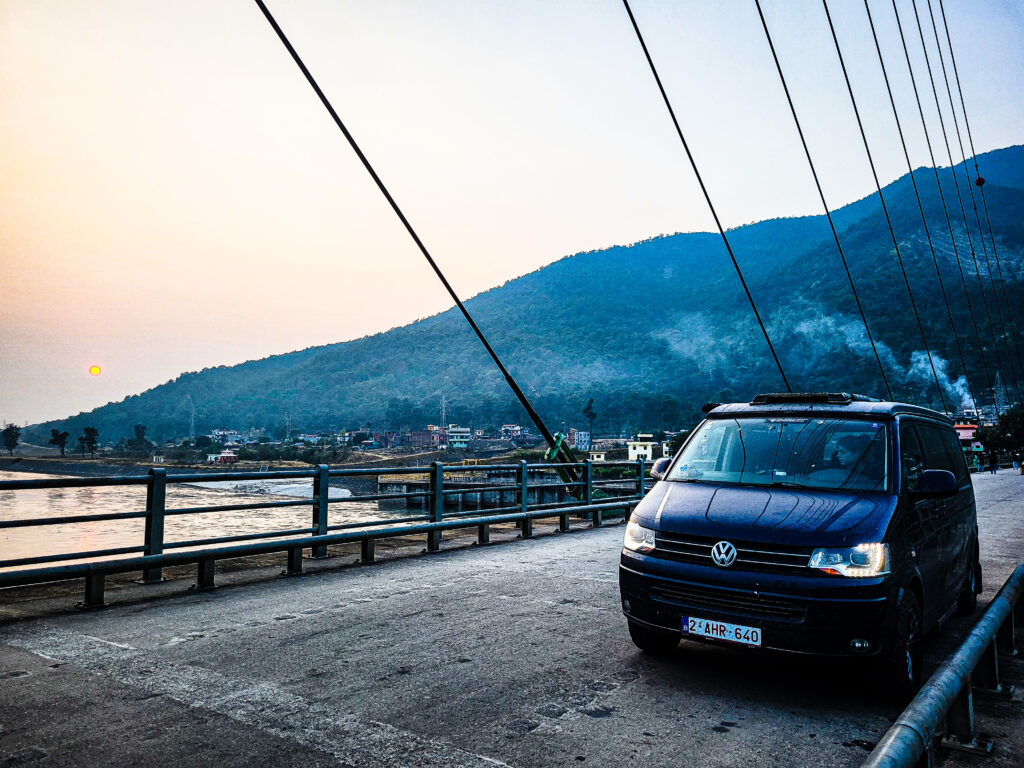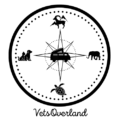Overlanding Nepal
We spent many months driving in Nepal and are more than please of sharing our overlanding experience with you!
Annapurna circuit, Nepal
Border crossing
We entered Nepal through Banbasa-Kanchanpur border. After searching the internet for a long time, we found out that apparently, foreigners can enter Nepal through all land borders (and there are quite a lot of them), with the exception of some smaller border points that are only accessible for Indian and Nepali citizens. However, if you want to be sure, it’s best to inform yourself in advance. The Banbasa-Kanchanpur border for example is only crossable for foreigners when entering Nepal. You have to cross a bridge (Banbasa Barrage) to go to Nepal and this bridge is only open between 10-12 h, 14-16 h and 18-19 h (please check updated opening hours on Google). After crossing the bridge you will find the immigration and custom office. We experienced a quite easy and quick transit.

The most popular Indo-Nepal land borders are the Sonauli and Raxaul borders. Coming from Pakistan, we wanted to enter Nepal as soon as possible instead of driving all the way through India to the Sonauli border. The main reason for this was the terrible roads and driving that India had to offer. Google Maps also said that both ways had the same travel time and distance.
Roads
First off, in Nepal you drive on the left hand side, just as in India and Pakistan for example.
Nepali roads are in bad condition, generally speaking. Road works seem to be going on forever and you’ll see them everywhere, leading you to question how there is no better road condition. Most important reason for this seem to be the monsoon (heavy yearly rainfall just ruins the renovated roads each year). However, locals also mentioned that because of poor government investments and structural thinking/work, roads are built with inferior quality.
Nepal’s highways, including the longest one, the East-West Highway, are almost always two lane highways in poor condition. Inevitebly, increasing amounts of trucks, buses and regular cars using these highways together with the crazy driving of Nepalese people, will lead to dangerous situations. Speed limits are often between 40-60 km/h but it’s more 30 km/h you’ll be driving if you want to keep your vehicle alive. Entire villages and even cities are built around these highways making it a place where you can also find tons and tons of animals, pedestrians, playing children, etc. Cows on the road for example is a very common thing and they feel like road kings since they move for nothing or no one.
The road conditions on the E-W highway are better in the eastern part of the country. After Butwal, you often find nice parts of asphalt all the way to Kakarvitta. There is one part (between Bardipas and Kalyanpur) where there is quite good road, but there are quite high speed bumps every 200 m.
There are police checkpoints regularly but we were never stopped by police, unless in a national park. The reason for this is because in NP’s, your entry and exit time will be noted to make sure you don’t drive too fast and that you don’t spend too much time in there for no reason. You get a time zone in which you have to report to the second checkpoint.
Fuel
Good thing about driving in Nepal is often the nice scenery since you can drive through several national parks and can even spot some wildlife if you’re lucky. Also, there are no toll roads (at least we never paid toll anywhere).
Fuel of descent quality is hard to find, but both diesel and petrol are available at almost all gas stations. There are no major companies like Shell, BP or Total in Nepal. Most fuel is processed and distributed by Nepal Oil. We always tried to search for a proper looking petrol pump and asked them if they sold Euro Diesel. Often even the manager had no idea what this meant and the best we found was Euro 4 (we’ll never know if it was true). Payment is almost always in cash.
Don’t expect to find any highway petrol stations to fill up (or to spend the night, find water or toilets, …) like the ones in e.g. Europe. Most of the time highways go through cities and that’s where you find gas station. Depending on the size of the gas station, you’ll find some basic amenities like a toilet.
Spending the night
Although some people may claim otherwise, Nepal felt very safe to us. People may be interested in your vehicle and in yourself but after a short visit and a smile they’ll often leave you be. In some places people didn’t even really care for us so we had absolute peace of mind. This doesn’t mean they don’t like you or don’t care about you because if you would be in their way, they’ll kindly would move you to a different place but rarely will send you off without helping you finding a new place. Additionally, locals will often warn you about the dangers of animals in your area such as wild elephants and tigers. Wild elephants are dangerous and can be found in close proximity of national parks. They cover great distances but tend to follow the same paths, which locals often know of. We have been asked to move several times by locals due to a potential visit by elephants and in several occasions we heard or even saw the elephants at night!
Our location hunt existed of looking on google maps for a small road going through a green spot. We drove there and in most cases we could spend the night in remote and beautiful area. Even if there are some locals, they’ll probably just try to help you or have a chat.
In cities it’s often more difficult to find a remote spot and we often tend to either sleep in hotels/hostels or have a meal at a restaurant and spend the night in front of their property. We have been warned by some locals that sleeping on the street can be dangerous, mostly due to drunk people harassment, however we have never found this to be true.
Our journey
After crossing the border, we found out that the roads in Nepal are even worse than India. Without exaggerating we can easily say that the roads are the worst that we’ve experienced during our journey. The parts that we could drive faster than 40 km/h were very rare and the entire way from Butwal to Pokhara we drove around 10 km/h because of the tremendous amount of potholes and just crappy roads in general. Many times we thought that the car would break down or that we were going to have a flat. Also, it is harder to find fuel (and it’s more expensive) and there is not much assistance available if your car breaks down. Because of these reasons we would advise you to drive through India as far as you can and cross the border into Nepal after.
The advantages of crossing the border at Kanchanpur are that there is less traffic and that the scenery is nicer than the Indian highways. You drive through many national parks where there are tigers, elephants, monkeys, rhinos, … So if you have the time to stop and enjoy the natural parks before heading to Pokhara to do some trekking, this route is definitely the one to takeWe were in a rush since we wanted to trek the Annapurna Circuit and Basecamp before December which made driving through Nepal less appealing but we still enjoyed it very much!
In our experience, the part between Kanchanpur and Butwal was the worst. After Butwal, you often find nice parts of asphalt all the way to Kakarvitta. There is one part (between Bardipas and Kalyanpur) where there is quite good road, but there are quite high speed bumps every 200 m. As a general rule for the entire E-W highway, you can drive around 40-50 km/h.
